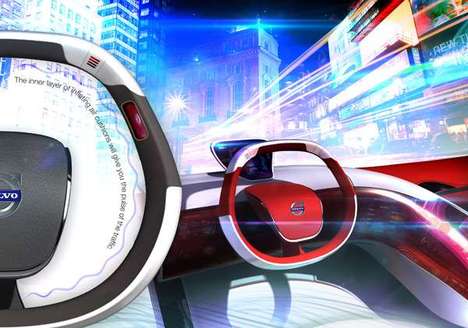Automation in Everyday Life and What It Means for Brands
Related Trend Reports
AI, Art & Design, Computers, Gadgets, Health, Inventions, Lifestyle, Marketing, Mobile, Multimedia, Tech, Unique Over the last few years, developments in technology have allowed for the creation of products that enhance automation in everyday life. Home automation products, in particular, are on the rise, allowing consumers to essentially program and control daily activities, such as operating the thermostat, locking doors and keeping tabs on pets -- all of which can be done on a smartphone or computer.
Over the last few years, developments in technology have allowed for the creation of products that enhance automation in everyday life. Home automation products, in particular, are on the rise, allowing consumers to essentially program and control daily activities, such as operating the thermostat, locking doors and keeping tabs on pets -- all of which can be done on a smartphone or computer. What does automation in everyday life mean for brands? In addition to opportunities for tech- and software-based companies, the rise in automation also creates opportunities for brands in a wide array of product categories, including kitchen appliance, furniture, cars, entertainment and more.
At Trend Hunter, we've seen a range of brands developing automation products. For example, LG just debuted its Smart ThinQ Fridge earlier this year. The fridge can be connected to a person's smartphone -- for example, it will send you texts when you run out of groceries -- and it also has an in-fridge dietician to provide you with healthy eating tips. Another example is the heating system by Nest. Its smartphone-controlled thermostat allows you to control it wherever you are, so you can turn down the heat or AC while you're out of the house. The device even learns your "heating habits" -- after you've set the thermostat manually for a week, it will start setting the temperature based on what its learned of your habits and adjust the heating and cooling accordingly. Other items that can be automated include the Toba's pellet stove, Samsung's android oven and the Orbotix Sphero, a ball that can be controlled via iPhone.
Automation in everyday life also creates opportunities for startups that are basing their business model on providing automation through hi-tech hubs. One example is Fraunhofer Institute's 'Wireless Smart Socket,' a hub that allows you to control your TV, lighting and any other digital device in your home with your phone or computer. Recently, Trend Hunter also featured the innovative SmartThings platform, which not only connects your digital devices to your smartphone but ordinary (non-digital) items, including your drawers and cupboards, your pet's collar and even your lawn sprinklers.
Automation even extends to driving, as we've seen with recent driverless technologies that allow drivers to sit back and let the car do all the work. These include Ford's Traffic Jam Assist, which automates your driving during high-congestion periods, Volkswagen's Park Assist, and of course, Google's Autonomous Car, a modified Toyota Prius that runs via computer.
Digitalization and automation in everyday life is more profound than we could have imagined even 10 years ago. For consumers, this extensive automation provides convenience and easy-use of virtually any product; for brands, it means an opportunity to develop and create products that can be operated wirelessly via smartphone and computer, as well as items that can be combined and connected with other products. For more on automation and developments in technology and the home, download Trend Hunter's Technology Trend Report and Home Trend Report.
References: trendhunter, trendreports
Featured Articles

Tech-vergence
High-tech meets low-tech with merge of physical instruments & digitalization

Hands-Free Tech
The transformation of eyewear into high-tech devices

Converta-Tech
Innovations that augment and convert existing gadgets

Voice Control
Efficient technologies are evolving to allow for more multi-tasking

AUTOmatic
Driverless technologies enhance the driving experience

Touchless Living
The move from contact-based to contact-free innovation